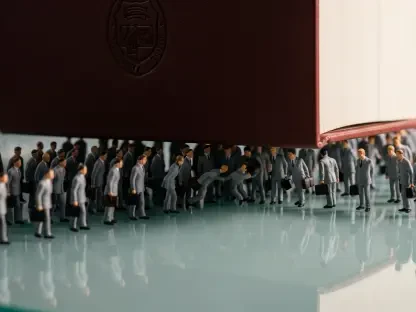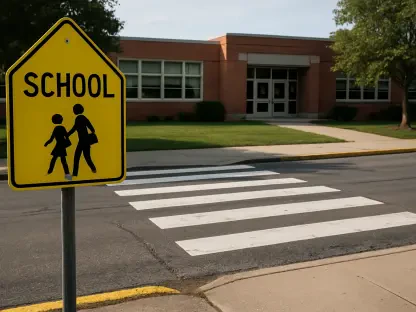Welcome to an insightful conversation with Camille Faivre, a renowned expert in education management who has dedicated her career to transforming K-12 learning environments. In the wake of the post-pandemic era, Camille has been at the forefront of supporting institutions with innovative open and e-learning programs. Today, we dive into her experiences and strategies for enhancing student engagement, improving teacher clarity, and addressing the evolving needs of diverse school communities. Our discussion explores the importance of tailored professional development, the impact of demographic shifts on education, and the power of frameworks that prioritize clarity and engagement in the classroom.
How did you become passionate about education management, and what drives your work in supporting schools with professional learning and curriculum development?
I’ve always believed that education is the foundation of a thriving society, and over the years, I’ve seen how strategic management can make or break a school’s ability to serve its students. My passion grew from working directly with educators and witnessing the challenges they face, especially in adapting to rapid changes like those brought by the pandemic. What drives me is the opportunity to create systems that empower teachers and engage students, ensuring that learning is meaningful and accessible to everyone, no matter their background.
Can you share how the growing diversity in student populations has influenced the way you approach professional learning for educators?
Diversity in schools isn’t just about numbers; it’s about understanding the unique experiences and needs that students bring into the classroom. As demographics shift, I’ve seen a greater demand for professional learning that equips teachers to address cultural, linguistic, and socioeconomic differences. My approach focuses on needs-based training that’s delivered just in time, ensuring educators feel prepared to connect with every student. It’s about giving teachers a voice in their development so they can create inclusive environments where all learners feel valued.
What challenges have you encountered when addressing stagnation in student growth, and how have you tackled those through instructional strategies?
One of the biggest challenges is recognizing that stagnation often stems from a lack of focus on foundational instruction. When growth scores plateau, it’s a signal that we need to strengthen core teaching practices before leaning on interventions. I’ve worked with teams to prioritize Tier 1 instruction, ensuring that every student receives high-quality teaching from the start. This means aligning learning goals with clear expectations and providing teachers with the tools to deliver lessons that stick. It’s a slow process, but the impact on student outcomes is worth the effort.
Teacher turnover is a significant issue in many districts. How have you worked to support new educators and encourage them to stay in the profession long-term?
Turnover is heartbreaking because it disrupts continuity for students and strains school resources. I’ve found that many new teachers leave due to feeling overwhelmed or unsupported in their early years. My focus has been on creating robust onboarding programs that provide mentorship, practical training, and a sense of community. By investing in their professional growth from day one and connecting them with experienced peers, we help them build confidence and a foundation for a sustainable career in education.
Frameworks like teacher clarity and engagement by design have been game-changers in some districts. Can you explain why these concepts are so critical to improving classroom experiences?
Teacher clarity and engagement by design are about creating a shared understanding between educators and students. Clarity ensures that students know what they’re learning, why it matters, and how they’ll be assessed, which reduces confusion and boosts motivation. Engagement by design takes it further by encouraging teachers to craft lessons that actively involve students through meaningful interactions and relevant content. Together, these frameworks transform classrooms into spaces where learning is intentional and students feel connected to the material and their teachers.
Initiatives like student engagement academies have emerged as powerful tools post-pandemic. What inspired you to explore such programs, and how do they support teacher growth?
The pandemic exposed a stark decline in student engagement, and it became clear that we needed innovative ways to reignite that spark. I was inspired to develop programs like student engagement academies because they offer job-embedded, contextual learning for teachers. These initiatives bring educators together in professional learning communities to observe each other, share strategies, and reflect on their practice. By focusing on real-time feedback and personalized projects, teachers grow in ways that directly translate to their classrooms, ultimately benefiting their students.
Student feedback can often reveal surprising insights. What have you learned from listening to students about their learning experiences, and how has that shaped your strategies?
Hearing from students has been incredibly humbling. I’ve learned that many of them crave clarity and connection—they want to understand the purpose behind their lessons and feel that their teachers care about their success. Some of the most striking feedback has been about how relationships and clear expectations keep them engaged, even in challenging times. This has pushed me to prioritize professional development that helps teachers build those bonds and communicate learning goals effectively. It’s a reminder that students are at the heart of everything we do.
What is your forecast for the future of professional learning in K-12 education, especially as we navigate post-pandemic challenges and technological advancements?
I believe professional learning will become even more personalized and technology-driven in the coming years. As we recover from the pandemic, there’s a growing recognition that one-size-fits-all training doesn’t work. I foresee a shift toward flexible, on-demand learning platforms that allow teachers to access resources when they need them most. At the same time, technology like virtual reality and AI could offer immersive training experiences, helping educators practice real-world scenarios. My hope is that we balance these advancements with a focus on human connection, ensuring that professional learning remains a collaborative and supportive journey for every teacher.









